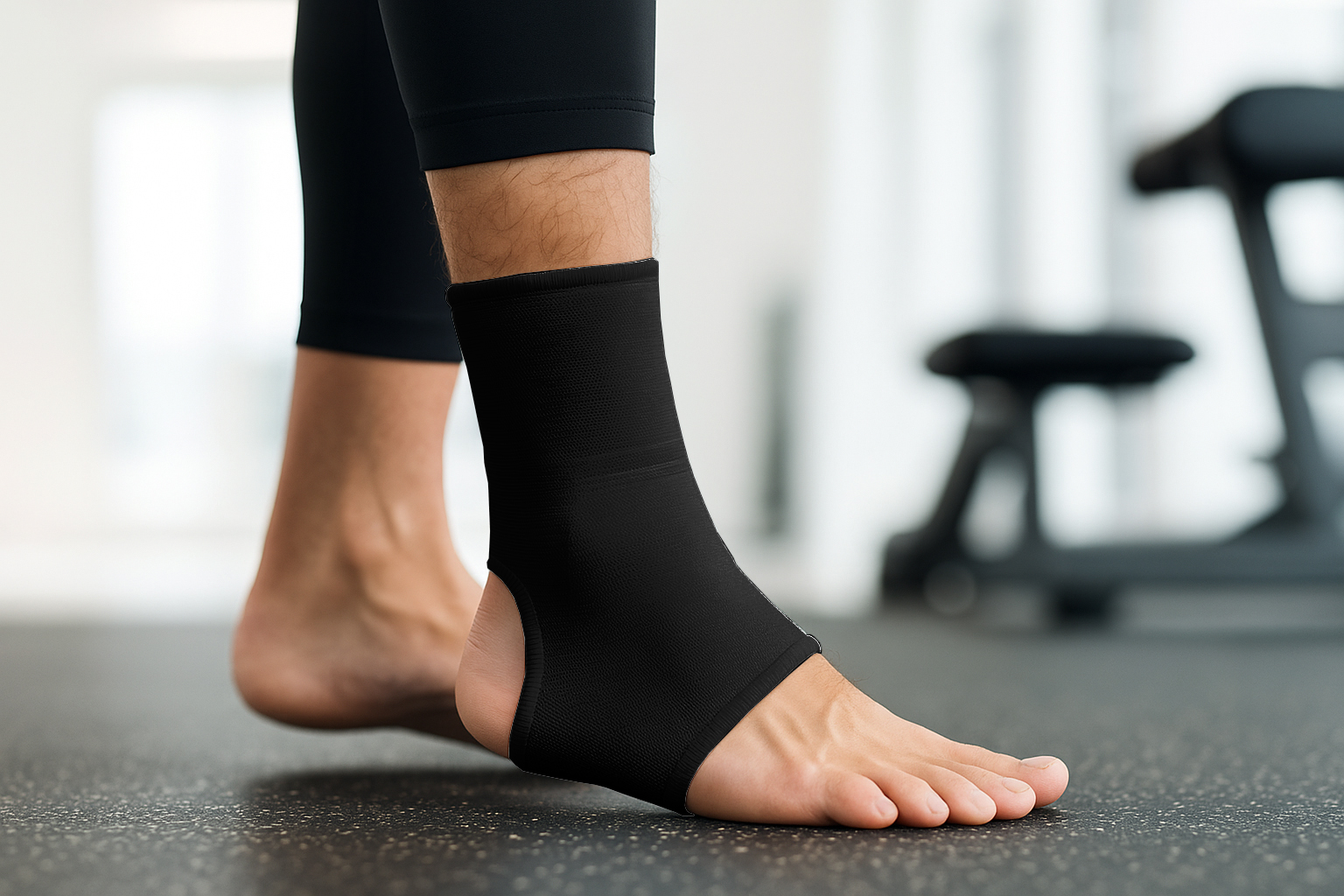Ever twisted your ankle while doing something embarrassingly normal — like stepping off a curb, reaching for the TV remote, or attempting a majestic yoga pose and immediately regretting it? Enter the humble ankle brace: the little fabric/silicone/Velcro hero that quietly keeps your foot behaving while you get back to life.
An ankle brace is used to support, stabilize, compress, and protect the ankle joint. That covers a lot of ground, so let’s break it down in plain bloggy terms:
- Stabilize — it limits excessive side-to-side motion that can cause sprains or make an existing sprain worse.
- Compress — gentle pressure reduces swelling and gives that reassuring “hold” feeling.
- Protect — during exercise, sport, or everyday activities it acts as a barrier against re-injury.
- Rehab aid — after an injury, braces let you move sooner and safer while tissues heal.
- Prevention — if your ankles are weak or you play pivoty sports (basketball, tennis, trail running), a brace lowers the risk of rolling it.
So basically: prevent, protect, heal, reassure. Sounds simple, but the right brace — used at the right time — can make a big difference.
When you might wear one
- After an ankle sprain or strain (acute recovery phase and while reintroducing activity).
- If you have chronic ankle instability or previous repeated sprains.
- During sports that stress the ankle — jumping, twisting, abrupt stops.
- On rough terrain or long hikes when fatigue raises injury risk.
- For arthritis flare-ups when you want extra joint support and warmth.
Types of ankle braces (quick tour)
- Sleeve/compression — lightweight, breathable, good for mild support and swelling.
- Lace-up — more structure, adjustable support; popular for sports.
- Stirrup or rigid — hard plastic or reinforced stays for high stability after serious sprains.
- Wrap/strapping — highly adjustable, good for swelling or targeted compression.
Kenfit ankle support brace — a shoutout
If you’re shopping and want something that balances everyday comfort with sport-ready support, the Kenfit ankle support brace is worth a look. Kenfit-style braces typically combine breathable fabric, firm compression, and adjustable straps so you can dial support up or down depending on activity. People like them for gym sessions, light trail use, and everyday stability after minor sprains. They’re generally easy to slip on under shoes, washable, and not overly bulky — a practical pick if you want protection without hobbling yourself.
(Note: styles/parts vary — if you need a specific Kenfit model’s specs — materials, sizes, or ordering info — check the product page or packaging for exact details.)
How to choose the right brace
- Match the level of support to your need — mild pain/swelling → sleeve; unstable or recent sprain → lace-up or rigid.
- Fit matters — too tight = circulation problems; too loose = no help. Follow the sizing chart.
- Comfort + breathability — you’ll actually wear it if it’s comfortable. Look for moisture-wicking fabrics.
- Shoe compatibility — low-profile braces fit easily into athletic shoes; bulkier ones may need room.
- Washability and durability — you want usable fabric that survives sweat and repeat washes.
How to wear it (best practice)
- Put it on with the ankle relaxed and slightly bent.
- Align seams and any stays so they sit comfortably on the sides of your ankle, not directly over bone or tender spots.
- If it has straps, fasten from bottom to top, keeping even pressure.
- Test walking slowly, then try the movements you plan to do. Adjust tightness — it must support without numbing toes.
When NOT to rely on a brace
An ankle brace helps a lot, but it’s not a cure-all. See a clinician if you have:
- Severe swelling, intense pain, or inability to put weight on the foot.
- Numbness, tingling, or color changes in the toes.
- A deformity after a traumatic injury — you might need imaging (X-ray) to rule out a fracture.
Quick maintenance tips
- Rinse or machine-wash per label instructions after heavy use.
- Air dry — heat can warp elastic and stays.
- Replace if elastic loses firmness or structural parts bend out of place.
